
:: International Transaction Journal of Engineering, Management, & Applied Sciences & Technologies
http://TuEngr.com

ISSN 2228-9860
eISSN 1906-9642
CODEN: ITJEA8
FEATURE PEER-REVIEWED ARTICLES
Vol.10(13) (2019)(Special Issue) |
-
REVITALISATION AN URBAN CENTRE: REVIVING KLANG BUS TERMINAL AS A CENTRIFUGAL FORCE IN CENTRAL KLANG
 Bryan E.T. Yeoh, Robert Powell, and Camelia Kusumo* (School of Architecture, Building & Design, Faculty of Innovation and Technology, Taylor’s University, Lakeside Campus, 47500, MALAYSIA )
Bryan E.T. Yeoh, Robert Powell, and Camelia Kusumo* (School of Architecture, Building & Design, Faculty of Innovation and Technology, Taylor’s University, Lakeside Campus, 47500, MALAYSIA )
doi: 10.14456/ITJEMAST.2019.165
Keywords: Public transport system; Bus terminal design; Transportation hub; Urban connectivity; Urban revitalization; Transit Oriented Design.
AbstractThe public transport system in Malaysia has been declining over the years. Bus stations which were once the hubs of networks since the development of roads and highways are now slowly being marginalised. The reduction of buses on the road is the result of a staggering increase in registered private cars by 32% since 2012 (SPAD, 2015). The role of bus stations as nodal points that influence pedestrian pathways and liveability of an urban context is not taken into account. This research aims to explore the former Central Klang bus terminal, proposing ways to improve the overall transportation network system surrounding the bus terminal and reveal the importance of the bus terminal in its built environment. A case study method was used to analyse the relation between a bus terminal and its urban context. The findings show that due to its well-connected location in the city, the Klang bus terminal can act as a catalyst for the urban rejuvenation of Klang town. If the terminal is designed well, with an efficient spatial layout and convenient user experience, the terminal will not only function as a transportation hub, but also as a community hub for the Klang residents.
Paper ID: 10A13A -
FINANCIAL MODEL OF A REGIONAL SOCIAL SPHERE DEVELOPMENT
 Vladimir A. Artemov* (Department of Finance, Credit and Accounting, Federal State Budgetary Educational Institution of Higher Education, Kursk State University, RUSSIAN FEDERATION ),
Vladimir A. Artemov* (Department of Finance, Credit and Accounting, Federal State Budgetary Educational Institution of Higher Education, Kursk State University, RUSSIAN FEDERATION ),
Larisa V. Davydova, Ol'ga A. Fedorova, and Yuliya O. Skorlupina (Department of Economics, Finance and Accounting, Orel State University, RUSSIAN FEDERATION )
doi: 10.14456/ITJEMAST.2019.166
Keywords: Social investments; Social development; Financing regression model; Public finance management; Social financial influence; Public-private partnership (PPP).
AbstractThe article deals with peculiarities of financing in a social sphere (SS) of Russia. A special attention while making a financial model of a social sphere development (SSD) is paid to an institutional approach and to the temporal and spatial dynamics of the model. The authors made a model in order to evaluate how financing investment processes influences the results of a in the context of dominant concepts. It is shown that closeness of the connections between the researched variables can be demonstrated in the offered model, which can be used by representatives of state governing institutions or regional authorities while managing the social investments financing and the SSD. The financial model is demonstrated within the regions of the Central Federal District of Russia. Distinctive specific tendencies for the SSD are determined. It lets speak about possibilities of successful management of social investments in the fast-moving society.
Paper ID: 10A13B -
DATA AUGMENTATION AND NEURAL NETWORK MODELS CONSTRUCTION FOR HAND-WRITTEN CHARACTER RECOGNITION IN BIOMETRIC AUTHENTICATION SYSTEMS
 Anastasia Gennadevna Isaeva* (Kazan Federal University, RUSSIA ),
Anastasia Gennadevna Isaeva* (Kazan Federal University, RUSSIA ),
Alexey Sergeevich Katasev, Amir Muratovich Akhmetvaleev, Dina Vladimirovna Kataseva (Information Security Systems Department, Kazan National Research Technical University named after A.N. Tupolev, RUSSIA )
doi: 10.14456/ITJEMAST.2019.167
Keywords: biometric identification; Augmented ANN; Distorted handwriting; Numeric handwriting; Training ANN.
AbstractThis paper solves the problem of neural network model construction for hand-written character recognition. The preparation of data for training neural networks was carried out using the augmentation method by including distortions of two types in the data: resizing and rotation of the characters. To build the models, two training sets were used: initial data and augmented data. The training accuracy of neural network models was 100%. To assess the generalization ability of the constructed models, a test sample with a volume of 1000 records (100 records for each digit) was formed, consisting of ordinary and distorted images of decimal digits missing in the training samples. The accuracy of the initial neural network model during testing was 84.7%, and the accuracy of the augmented model was 95 %. For each neural network model, errors of types I and II were calculated, having a value of 6.2% and 9.1% for the original neural network model and 1.8% and 3.2% for the augmented one. Consequently, the enrichment of the initial data allowed us to reduce the level of errors of the first type by 4.4%, and the number of errors of the second type by 5.9%. In addition, the total error of each model is calculated based on the three-block cross-validation method. The error of the original model was 0.21, and the augmented one - 0.07. Consequently, the total error of the augmented model decreased by 0.14 compared with the original model. Thus, the augmented neural network model is an effective hand-written character recognition tool and can be used in biometric authentication systems.
Paper ID: 10A13C -
COLONIAL INFLUENCE ON INDIAN MUSLIM RELIGIOUS MONUMENTS IN PENANG
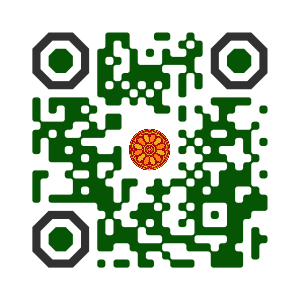 Ahmad Sanusi Hassan *(School of Housing, Building and Planning, Universiti Sains Malaysia (USM), Penang, MALAYSIA ),
Ahmad Sanusi Hassan *(School of Housing, Building and Planning, Universiti Sains Malaysia (USM), Penang, MALAYSIA ),
Asif Ali (School of Housing, Building and Planning, Universiti Sains Malaysia (USM), Penang, MALAYSIA and Architecture Section (University Polytechnic), Aligarh Muslim University, INDIA ),
doi: 10.14456/ITJEMAST.2019.168
Keywords: Colonial architectural style; Indian Muslim monuments; George Town; Penang; Neo-classical elements.
AbstractThis paper discusses a level of influence of colonial style to Indian Muslim monuments built in George Town, Penang during colonial time. George Town was the earliest British settlements in Malaysia as well as in South East Asia. From 1786 to 1957, this town functioned as a port city of British East India Company. A colonial era had influenced the architectural style of the buildings built in George Town. This study focusses analysis of the architectural style and its impact to the Indian Muslim monuments. Indian Muslims were the first traders who migrated to Penang as well as Indian Hindus under the British administration. This study applied qualitative research method to the architectural style by referring to classical colonial elements. Three most popular Indian Muslim buildings namely Kapitan Keling Mosque, Madrasah Hamidi Arabi and Nagore Durgha Sheriff Shrine were selected as the case studies for the analysis. The result shows that arcade, corbel, cornice, parapet wall, pedestal, architrave, and round arch are among favourite neoclassical motifs integrated into the building design of the Indian Muslim monuments. This study concludes that apart from the British administrative buildings, Indian Muslim buildings have a reflection to the colonial architectural style.
Paper ID: 10A13D -
RURAL AND REMOTE BROADBAND DEVELOPMENT IN THAILAND: ENABLED BY LAST-MILE INFRASTRUCTURES AND SERVICES
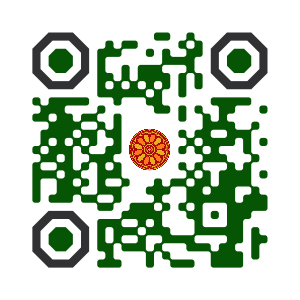 Chaiwat Oottamakorn* (College of Innovation, Thammasat University, THAILAND )
Chaiwat Oottamakorn* (College of Innovation, Thammasat University, THAILAND )
Piya Techateerawat and Parinya Thetbanthad (Department of Electrical and Computer Engineering, Thammasat School of Engineering, Thammasat University, THAILAND )
doi: 10.14456/ITJEMAST.2019.169
Keywords: Digital economy; Broadband implementation and services; Mobile implementation and services; Rural and Remote Areas in Thailand; Digital device.
AbstractCurrently digital economy is one of the main national policy of the Thai government to fundamentally and extensively reform Thailand in all social and economic perspectives where the ICTs and digital technologies are comprehensively leveraged to drive the country forward. However, a big digital gap exists between urban and rural/remote areas. This paper illustrates new tailored last-mile technologies, which are suitable to the areas. The main goals of this development and implementation are to 1) provide high-speed broadband internet services and mobile services in the areas, 2) extend infrastructures and services to the areas so that remote people will be provided equal access to digital technology and information, 3) create the so-called digital economy and society in the areas, and 4) leverage digital technologies and services for the areas. The paper focuses on the area issues and requirements related to broadband accesses and presents an implementation solution which is efficient and economical for the areas. It also discusses related implications.
Paper ID: 10A13E -
IMPACTS OF GENDER ON JOB SATISFACTION AND WORK MOTIVATION RELATIONSHIP: A CASE OF TEACHERS IN BALOCHISTAN, PAKISTAN
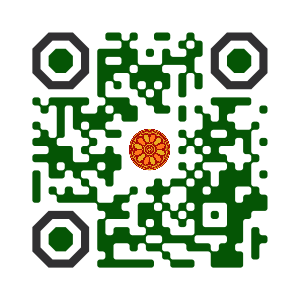 Abdul Raziq* (Department of Statistics, University of Sindh, Jamshoro, PAKISTAN and Department of Statistics, University of Balochistan, Quetta, PAKISTAN )
Abdul Raziq* (Department of Statistics, University of Sindh, Jamshoro, PAKISTAN and Department of Statistics, University of Balochistan, Quetta, PAKISTAN )
Raja M. Ilyas, Mir G. H. Talpur (Department of Statistics, University of Sindh, Jamshoro, PAKISTAN )
doi: 10.14456/ITJEMAST.2019.170
Keywords: Job satisfaction; Work satisfaction-motivation relationship; Hierarchical Regression Analysis; Moderating Effect; Gender impact on job satisfaction; Teacher's job satisfaction.
AbstractThis study revealed that teacher's satisfaction, motivation, sense of accomplishment, positive and productive behavior are statistically related concepts in a positive direction. The moderating effect of gender on the relationship of satisfaction with other related concepts was tested using hierarchical regression. It was concluded that in Balochistan, the teacher's gender does not moderate any of the above-mentioned relationships (R-Square change was insignificant in all three models). All required statistical assumptions like the independence of errors, normality of residuals; multicollinearity and heteroscedasticity were tested and found met after possible standardization of variables. This study adds value to the pool of knowledge and helps institutional policymakers in making and implementation policies regarding teacher's satisfaction-motivation relationship and the moderation effect of demographic indicators.
Paper ID: 10A13F -
EFFECTS OF DIGITAL MARKETING ON INTERNATIONAL MARKET GROWTH
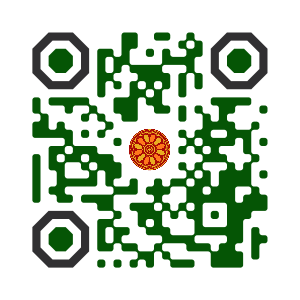 Hanifeh Manafzadeh*, Zolaykha Manafzadeh (Marketing Management Program, Department of Management, Rasht Branch, Islamic Azad University, Rasht, IRAN )
Hanifeh Manafzadeh*, Zolaykha Manafzadeh (Marketing Management Program, Department of Management, Rasht Branch, Islamic Azad University, Rasht, IRAN )
doi: 10.14456/ITJEMAST.2019.171
Keywords: E-marketing; International export market growth; Business network relationships; Digital marketing; Marketing ability.
AbstractToday, information and communication technology is the economic, social, and cultural development arm in different countries. Digital-marketing is one of the new processes and methods of marketing that has emerged as a result of the appearance/advent of an information technology phenomenon. One of its most significant tools is the Internet, which has profound effects on business processes. Despite the fact that the Internet as most effective electronic marketing tool with global markets has made it possible many companies access to global markets, but many companies are losing out on its use in export markets. Therefore, this study explains the effects of digital marketing on the growth of international markets. In this research data is gathered using field technique. In the field technique, the inventory is considered as a vital method of data collection. So, in this work an inventory was applied as an instrument for data collection. To examine the reliability of the inventory, the Cronbach's alpha was utilized. A questionnaire measuring for variables, including internet marketing capability, data availability, business network relationships, and the growth of the customer export market, is provided and distributed among 232 experts. Finally, the statistical hypothesis was tested through structural equations with LISREL software. The results of study confirmed the hypothesis of the effect of digital marketing ability on the growth of the export market and the business network relationships and information availability as well.
Paper ID: 10A13G -
A GAME THEORETIC APPROACH FOR ENERGY OPTIMIZATION IN CLUSTERED WIRELESS AD HOC SENSOR NETWORKS
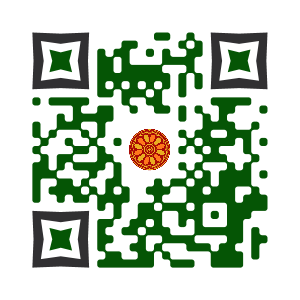 Asad Saleem* (Key Laboratory of Specialty Fiber Optics and Optical Access Networks, Joint International Research Laboratory of Specialty Fiber Optics and Advanced Communication, Shanghai Institute for Advanced Communication and Data Science, Shanghai University, 200444, Shanghai, CHINA, and Shenzhen Key Laboratory of Antennas and Propagation, College of Electronics and Information Engineering, Shenzhen University, 518060, Shenzhen, CHINA, and School of Electronics, Quaid-i-Azam University, Islamabad, 45320, PAKISTAN ),
Asad Saleem* (Key Laboratory of Specialty Fiber Optics and Optical Access Networks, Joint International Research Laboratory of Specialty Fiber Optics and Advanced Communication, Shanghai Institute for Advanced Communication and Data Science, Shanghai University, 200444, Shanghai, CHINA, and Shenzhen Key Laboratory of Antennas and Propagation, College of Electronics and Information Engineering, Shenzhen University, 518060, Shenzhen, CHINA, and School of Electronics, Quaid-i-Azam University, Islamabad, 45320, PAKISTAN ),
Malik Asfandyar (School of Automation and Electrical Engineering Beihang University of Aerospace and Aeronautics (BUAA), 100083, Beijing, CHINA ),
Hasan Mahmood (Department of Electronics, Quaid-i-Azam University, Islamabad, 45320, PAKISTAN )
doi: 10.14456/ITJEMAST.2019.172
Keywords: Ad hoc networks; Clustering Schemes; Game Theory; WANET; Network Lifetime; D-CROSS; ZPR; LEACH.
AbstractIn this paper, our objective is to use the game-theoretic approach for clustered wireless ad-hoc networks to optimize system lifetime. Game theory (GT) has been exploited in the domain of biology and economics, but lately it is applied in routing and packet forwarding in Wireless Ad hoc Networks (WANETs). However, the clustering topic, concerned with self-directedness of sensor nodes into big groups, has not been examined under this model. Distance-based Clustered Routing For Selfish Sensors (D-CROSS) protocol assists in accomplishing energy conservation where every single sensor node is nominated as cluster head (CH) with zero probability rule (ZPR). Our analysis follows the non-cooperative game theoretic approach where each sensor node selfishly plays and tries to preserve its own energy and maximize its lifetime. We demonstrate here the Nash Equilibrium for mixed and pure strategies and anticipated payoffs. The comparison of the D-CROSS protocol with the Low Energy Adaptive Clustering Hierarchy (LEACH) protocol through simulations demonstrates that D-CROSS achieves improved performance in terms of network lifetime.
Paper ID: 10A13H -
THE PRELIMINARY INVESTIGATION BODIES IN THE 1917-1930S, XX CENTURY IN SOVIET RUSSIA: DIRECTIONS OF MODERNIZATION
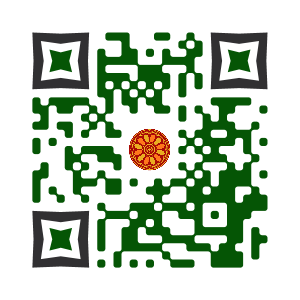 Maxim Y. Fisakov, Olga A. Andreeva* (Department of Theory and History of State and Law, Taganrog Institute of Management and Economics, Taganrog, RUSSIA ),
Maxim Y. Fisakov, Olga A. Andreeva* (Department of Theory and History of State and Law, Taganrog Institute of Management and Economics, Taganrog, RUSSIA ),
doi: 10.14456/ITJEMAST.2019.173
Keywords: Preliminary investigation bodies; History of state; Soviet investigation bodies; Criminal procedure law; Prosecutor's office.
AbstractThe relevance of the historical and legal analysis of the formation and activities of the preliminary investigation bodies in the 1917-1930S, XX Century allows us to understand the reasons for their modernization during the fierce class struggle for the establishment of Soviet power and its relationship with the changing realities of social and state development of that period. The article shows that the reorganization of the preliminary investigation during the Soviet period was evidence that reforms cannot be effective if they are not comprehensive and do not cover the entire law enforcement system.
Paper ID: 10A13I -
INTERACTION EFFECT OF SOCIAL SUPPORT: THE EFFECT OF WORKLOAD ON JOB BURNOUT AMONG UNIVERSITIES ACADEMICIANS: CASE OF PAKISTAN
 Faisal Khan* (Department of Management Sciences, University of Swabi, Anbar, Swabi, KP PAKISTAN )
Faisal Khan* (Department of Management Sciences, University of Swabi, Anbar, Swabi, KP PAKISTAN )
Amran Md Rasli (Sumait University, ZANZIBAR )
Muhammad Yasir (Department of Management Sciences, Bacha Khan University Charsada, KP PAKISTAN )
Qaiser Khan (Department of English, University of Malakand, Chakadara, Dir Lower, KP PAKISTAN )
doi: 10.14456/ITJEMAST.2019.174
Keywords: Emotional Exhaustion; Disengagement; Hierarchical Multiple Regression Analysis; Job Demands-Resources (JD-R) model; Academicians’ workload.
AbstractThe support comes primarily from the organization through supervisors but cooperation among the employees cannot be overlooked. The purpose of the present study is to investigate the relationship between workload and burnout dimensions (emotional exhaustion and disengagement) and identifying the interaction effect of social support with job burnout among academicians. The collected data is analyzed with the help of the Statistical Package of Social Sciences (SPSS). The study objectives are reached with the help of regression and Hierarchical Multiple Regression Analysis. The findings of the study reveal that workload has positive relationship with burnout dimensions, while supervisory and colleague support influence the relationship between workload and burnout dimensions. The study tests these relationships with the help of JD-R model. The study highlights implications for individual employees, institutions and recommends measures at policy level concerning the work environment where academicians can respond in a productive manner.
Paper ID: 10A13J -
IMPACTS OF LIVELIHOOD ASSETS ON WELLBEING OF RURAL HOUSEHOLDS IN NORTHERN NIGERIA
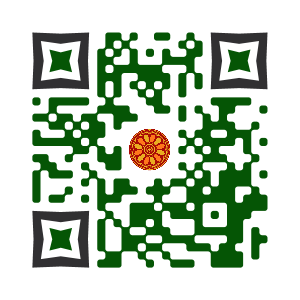 Yusuf Kasim* (Department of Public Administration, Umaru Ali Shinkafi Polytechnic, Sokoto, NIGERIA )
Yusuf Kasim* (Department of Public Administration, Umaru Ali Shinkafi Polytechnic, Sokoto, NIGERIA )
doi: 10.14456/ITJEMAST.2019.175
Keywords: Well-being factors; Human asset; Financial asset; Northern-Nigeria households; Sustainability of livelihoods.
AbstractThis study explores the determinants of well-being amongst rural households in Northern Nigeria, particularly, as it relates to accessibility to livelihood assets. Specifically, this study examined the correlation between access to human assets, financial assets, and well-being. Quantitative approach through a cross-sectional survey method was employed while the questionnaire was used, and the data for the study were collected from 350 rural households in Sokoto State using purposive sampling, and partial least squares (Smart-PLS 2.0) was used to evaluate the statistical significance and correlation between the predictors and criterion variables (Human Asset, Financial Asset, and Well-being). The results of the study revealed that accessibility to human assets and the financial asset has a positive effect on well-being. This study concludes that for well-being and prosperity to thrive in Northern Nigeria, rural households need to have access to human assets and financial assets to overcome poverty and vulnerability. Similarly, the study suggests further studies in another geographical context in Nigeria, the collection of data using a longitudinal survey and the examination of the effect of other livelihoods assets on well-being. Additionally, in terms of policy implication, the study suggests that concerned authorities in the Northern Nigeria in particular, and the Nigerian government, in general, should emulate the Malaysia strategy towards ensuring the well-being of the rural households through ensuring access to critical resources or assets that enhance well-being to support the sustainability of their livelihoods.
Paper ID: 10A13K -
PERFORMANCE EVALUATION USING NETWORK DATA ENVELOPMENT ANALYSIS APPROACH WITH GAME THEORY UNDER MIXED GREY-FUZZY UNCERTAINTY IN IRAN KHODRO COMPANY
 Maryam Tabasi, Mehrzad Navabakhsh*, Ashkan HafezalKotob (Department of Industrial Engineering, South Tehran Branch, Islamic Azad University, Tehran, IRAN )
Maryam Tabasi, Mehrzad Navabakhsh*, Ashkan HafezalKotob (Department of Industrial Engineering, South Tehran Branch, Islamic Azad University, Tehran, IRAN )
Reza Tavakkoli-Moghaddam (Department of Industrial Engineering, College of Engineering, University of Tehran, Tehran, IRAN )
doi: 10.14456/ITJEMAST.2019.176
Keywords: Fuzzy Sets Theory; Grey Theory; DEA; Stackelberg game; Centralized game; Nash game; Decision making unit (DMU).
AbstractStandard Data Envelopment Analysis (DEA) is a method for performance evaluation which does not consider the internal relations between decision making units (DMUs). Evaluating DMUs as black-boxes makes the evaluation unreal. Multistage DEA considers the internal structure of DMUs. In this article, all the outputs of first stage will be the only inputs of second stage which are also named intermediate measures. Both cooperative and non-cooperative games can be useful to obtain efficiency scores of DMUs. This study have used Nash bargaining game, Centralized and Stackelberg game to obtain efficiency of each DMU and the result show that efficiencies obtained from centralized game are the same as efficiencies obtained from Stackelberg game and they are greater than efficiencies obtained from Nash game. Also in real world the data is not always certain. We use both fuzzy and grey theory to widely manage the real situation. The case study of this article is Iran Khodro Company which is one of the most important companies at automobile industry and has a wide process of delivering for automobiles.
Paper ID: 10A13L -
MEDIA IN THE CONFLICT BETWEEN INTERNATIONAL DIPLOMACY AND PUBLIC OPINION: CASE STUDY OF BAN OF VISAS FOR SEVEN MUSLIM COUNTRIES
 Hamed Shayegan* (Faculty of Communication Sciences and Media Studies, Central Tehran Branch, Islamic Azad University, Tehran, IRAN and SMT Media Institute, IRAN )
Hamed Shayegan* (Faculty of Communication Sciences and Media Studies, Central Tehran Branch, Islamic Azad University, Tehran, IRAN and SMT Media Institute, IRAN )
doi: 10.14456/ITJEMAST.2019.177
Keywords: Media diplomacy; International Relations; Media on foreign policy; Media on foreign policy; Political conflict; Impact of media on public opinion; US Government
AbstractThis paper assesses the impact of media and its impact on political relations of countries in situations where the decisions of high-ranking officials are in contradiction with public opinion, the principles, and democracy standards of the country. As a case study, it addresses western and American media outlets in reflecting the news of the cancellation of the visa for seven Muslim countries. From the study hypothesis, western media, with a broad reflection of public opinion, increase the effect of public diplomacy on international relations in diplomacy contrary to the underlying principles of democratic countries. A descriptive survey has been used to achieve the goals. The study statistical population consisted of Tehran's journalists. Using Krejcie and Morgan table, 292 subjects were selected as the statistical sample. Research finding indicates that 28.7% of Tehran's journalists believe that most Western media objected to Tramp's decree to cancel the visa for seven Muslim countries because they were opposed to the president from the beginning of elections. In addition, 28.7% believe that the Western media's opposition to this decree because it was contrary to American democratic identity. The onesample t-test result showed that reasons for Western media outcry with US presidential decree on visa ban for seven Muslim countries from Tehranian journalists' point of view include the variables of opposition to Tramp’s policy because of opposition to its presidency, Tramp's contradiction with American democratic identity, Tramp's contradiction with public opinion and human rights organizations, Tramp's contradiction with the past policy of Western media on promoting freedom of expression in the United States, and Tramp's contradiction with America's past policies. According to the Friedman's test result, "opposition to Tramp's policy because of opposition to its presidency" has a higher average score compared to other indicators in terms of capability and impact. Similarly, other indicators are ranked next.
Paper ID: 10A13M -
GAS CONDENSATE DESULFURIZATION BY OXIDATION METHOD IN THE PRESENCE OF NANOCLAY AND CHITOSAN ADSORBENT: AN EXPERIMENTAL STUDY
 Parisa Aminirad, Seyed Abolhasan Alavi*, Mohammadreza Jafari Nasr (Department of Chemical Engineering, Science And Research Branch, Islamic Azad University, IRAN )
Parisa Aminirad, Seyed Abolhasan Alavi*, Mohammadreza Jafari Nasr (Department of Chemical Engineering, Science And Research Branch, Islamic Azad University, IRAN )
doi: 10.14456/ITJEMAST.2019.178
Keywords: HDS; Adsorption, Langmuir isotherm, Freundlich isotherm, Adsorption kinetic.
AbstractOxidative desulfurization process for gas condensate using a mixture of hydrogen peroxide and formic acid have been investigated. Oxidation under optimal conditions accompanied extraction operation using acetonitrile and finally adsorption was performed on clay, nanoclay and novel adsorbent of chitosan – nanoclay. By use of oxidation process on feedstock with the initial sulfur amount of 2500 ppm optimum parameters for reaching the minimum sulfur content were derived. Effects of operating parameters such as temperature, the amount of formic acid used as catalyst for oxidation and process time were investigated and the best operating conditions for oxidation were determined by designing the relevant experiments. Adsorption isotherms modeling and also kinetic models has been studied. The best conditions for oxidation were determined as follows: Acid-to-feed ratio =1, Reaction temperature= 50°C, Reaction time= 45 min. After about 30 minutes of adsorption process, the adsorbent was saturated and the increase in contact time had no effect on the removal of sulfur compounds. Adsorption isotherms modeling of common Langmuir and Freundlich models showed that both nanoclay and nanoclay-chitosan adsorbent followed Freundlich's model for adsorption. Studies of three common kinetic models : pseudo- first-order, pseudo- second-order, and intra-particle diffusion model indicated that the kinetics of this adsorption was of the pseudo second order type. This effective way of combination the Oxidation in optimum condition with this sorbent should be used as novel technology of desulfurization in order to achieve the gas condensate with minimum sulfur.
Paper ID: 10A13M
Other issues:
Vol.9(2018)
Vol.10(1)(2019)
Vol.10(2)(2019)
Vol.10(3)(2019)
Vol.10(4)(2019)
Vol.10(5)(2019)
Vol.10(6)(2019)
Vol.10(7)(2019)
Vol.10(8)(2019)
Vol.10(9)(2019)
Vol.10(10)(2019)
Vol.10(11)(2019)
Vol.10(12)(2019)
Archives
Call-for-Papers
Call-for-Scientific PapersCall-for-Research Papers: ITJEMAST invites you to submit high quality papers for full peer-review and possible publication in areas pertaining engineering, science, management and technology, especially interdisciplinary/cross-disciplinary/multidisciplinary subjects.
To publish your work in the next available issue, your manuscripts together with copyright transfer document signed by all authors can be submitted via email to Editor @ TuEngr.com (no space between). (please see all detail from Instructions for Authors)
Publication and peer-reviewed process:
After the peer-review process (4-10 weeks), articles will be on-line published in the available next issue. However, the International Transaction Journal of Engineering, Management, & Applied Sciences & Technologies cannot guarantee the exact publication time as the process may take longer time, subject to peer-review approval and adjustment of the submitted articles.